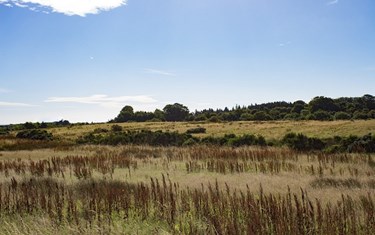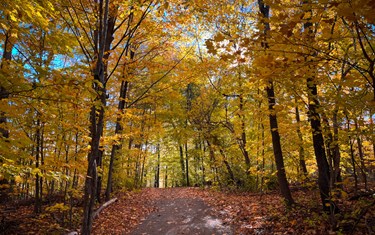Section 1 - Does a changing context need a changing vision?
Q1 Do you feel this vision still reflects the outcomes we need to achieve?
Yes
Q2 If not, what key changes would you like to see for a new Land Use vision?
Please enter any changes you would like to see for the vision:
RTPI Scotland considers that the vision is still appropriate and reflects the outcomes we want to achieve but it could perhaps be strengthened by inserting health before well-being, and making explicit reference to the Green Recovery, Inclusive Growth, Net- Zero and Climate Change as the key challenges. As well as the suggested additions outlined above it would be appropriate to set out clearly the purpose of the third Land Use Strategy (LUS3). The Planning (Scotland) Act 2019 contains a purpose of planning, stating that “The purpose of planning is to manage the development and use of land in the long term public interest.” A clear purpose of the LUS3 will help better clarify where it fits into the current planning and environmental landscape and the already comprehensive list of frameworks, strategies and policy areas. Use of the term landscapes instead of land resources would create more continuity with the rest of the document.
Section 1 - Does a changing context need a changing vision?
Q3 Do you think any of the above objectives need updating? If so, please indicate which you think needs changes. You can tick all that apply.
“Land based businesses working with nature to contribute more to Scotland's prosperity” should be changed, “Responsible stewardship of Scotland's natural resources delivering more benefits to Scotland's people” should be changed, “Urban and rural communities better connected to the land, with more people enjoying the land and positively influencing land use” should be changed
Q4 If you consider that one or more objectives need updating, please explain what changes you would like to see in the objective(s).Please make sure you state clearly which objective each suggestion relates to.
Please type changes you would like to make to the objectives here:
We feel that our response above to Question 2 suggests that there may well be an “identity” issue with the document and this also manifests itself in the key objectives cited which appear to be rather selective and partial. For example, there is a notable omission of an objective setting out how LUS3 will contribute towards the 75% reduction of carbon emission target by 2030, especially given the clear connection between land use and carbon emission reductions, as highlighted recently by the UKCCC. A routemap is referred to but it is not shown. This would help to set out the documents within the hierarchy of key planning and land use documents. Updated objectives have been proposed in order to create continuity with the rest of the document where landscapes are used to talk about land use:
B) “Land based businesses working with nature to contribute more to Scotland's prosperity” should be changed to “Ensuring landscapes contribute towards Scotland’s economic success, driving inclusive growth”
C) “Responsible stewardship of Scotland's natural resources delivering more benefits to Scotland's people” - should be changed to “Encouraging responsible stewardship of Scotland's landscapes to enhance natural capital, delivering more benefits to Scotland's people and nature”
D) “Urban and rural communities better connected to the land, with more people enjoying the land and positively influencing land use” should be changed to – “Enhancing access to high quality landscapes to improve health and wellbeing of communities and supporting tourism.”
Section 2 - Achieving the objectives: getting the best from our land
Q5 Before reading this document were you aware of the pressures on our land?
Strongly aware of all pressures on our land
Q6 Are you aware of ways people can get involved in land use matters within your local area?
Yes
Section 3 - Using landscapes to talk about land use
Q7 Do you think the landscapes are an effective way to communicate Scottish Government policy?
Yes
Please enter any comments:
As mentioned in Q1 and Q4 if this approach is adopted then it should be applied consistently throughout the strategy especially embedding this use of language within the vision and the objectives.
RTPI Scotland supports the intention to improve the accessibility and relevance of the LUS3 so that it to reaches a wide audience and demonstrates the relevance of land use both now and in the future to everyone in Scotland. We also support a clear articulation of how the different strands of Scottish Government policy come together.
RTPI Scotland advocates an approach which places land-use planning at the heart of the post pandemic challenges for Scotland and we support the view that planning has, and will continue to have, a key role to play in transforming our settlements and landscapes. We have set out our ambitions for NPF4 which will be linked to the forward planning for the programme of secondary legislation to support the new duties, in the Planning Act, for authorities to produce, for example Open Space Strategies and Woodland and Forestry Strategies. We see this as the principal strategy for effective land use planning in Scotland and therefore the status and role of the LUS3 be clear articulated and delineated to be effective.
A wide range of initiatives are set out in the Paper, which are individually and collectively endorsed by RTPI Scotland as part of the land-use planning toolkit approach. These include:
- Expanding green networks across Scotland’s city regions
- Targeted advice to communities involved in using, owning and managing woodland.
- Investing in local blue and green infrastructure
- Reducing greenhouse gas emissions
- Green Infrastructure Fund and Green Infrastructure Community Engagement Fund
- Regional Spatial Strategies
- Local Place Plans
- Place making principles
- Climate Action Towns.
- Minimising the environmental impact of food production
- 2018 - 2032 Climate Change Plan
- Integrated approach to land use Marginal land
- National Peatland Action Plan
- The Biodiversity Challenge Fund
- Scottish Land Fund
- Scottish National Marine Plan
However RTPI Scotland is unsure whether this approach will bring the benefits outlined at the beginning of the Paper. We note that the Strategy is proposing a different approach to presenting the policy content within this Strategy which will move away from policy areas conceptual and we support this provided it is clear, transparent and meaningful. However as recognized by Policy 3 in the existing strategy there is a need to provide more detail and clarity on the relevance of the LUS to the planning system. Whilst mention is made to the National Planning Framework, Regional Spatial Strategies (RSSs), LDPs and LPPs it is not done in a consistent or clear manner. For example, RSSs are only mentioned under the ‘peri-urban’ heading whilst there is no mention of the NPF, LPPs or LDPS under the headings of ‘Fertile land’ ‘Marginal Land’ and ‘Uplands’. This does not capture the close interaction between landscape management and the planning system which is dealt with by many rural planning authorities, whether this be by approving development necessary for land management such as hill tracks and renewable energy projects or supporting delivery of tourism related infrastructure, critical to supporting the rural economy in Scotland.
The approach does not clearly make the connection with other key areas of Government Policy. For example, place-making principles only appear under the peri-urban heading in reference to cleaner air. The place-principle should be overarching given the landscape theme approach. The recently published NPF4 position statement makes a clear commitment to focusing on place through reviewing the Town Centre Action Plan, the Land Use Strategy and the Place Principle. RTPI Scotland would like to see a similar commitment made in the LUS3 with more consistent language used referencing the place-principle. Similarly the section under the title ‘urban forestry’ should instead reference Forestry and Woodland Strategies, as set out in the Planning (Scotland) Act 2019 and reference to ‘stunning scenario’ may be clearer if instead reference is made to National Scenic Areas.
Q8 Under each landscape we have identified three sub headings: Climate Change, Biodiversity and Communities. Do you feel these capture the crosscutting themes that are important to all of Scotland?
Yes
Please enter any comments:
Yes but we feel that there are other equally worthy issues which also need to be showcased including, place making, inclusive growth and health and well- being.
Q9 Does the content of the Land Use Strategy and the manner in which it has been presented, demonstrate that the Scottish Government is taking steps to help deliver sustainable land use?
Yes
Please enter any comments:
Yes but RTPI Scotland acknowledges that the current consultation document does not include the detailed delivery plan, due to be published as a part of stage two of the consultation process, which will be critical in demonstrating how LUS3 will help deliver sustainable land use. However as set out in the document, LUS3 is to bring together key strands of various Scottish Government policies that touch on land use and showcases how these various areas fit together. With this intention in mind, we do not consider that this has been fully achieved in the document as set out, with notable omissions of a range of policies and strategies which directly impact upon land use such as the Infrastructure Investment Plan, City-Region Deals, Regional Economic Partnerships and the National Transport Strategy. As mentioned in response to Q7 we see this as the NPF4 as the principal strategy for effective land use planning in Scotland and one that can coordinate and join up a lot of these strategy and policy strands, including the LUS3, at a national level and link them to a spatial and physical context. Therefore we would encourage more clarity of the interrelationship between the NPF4 and LUS3 and how this will tie in the range of aforementioned strategies and plans.
Section 4 - Equality: call for evidence
Q10 If you have lived experience or have studied the impacts of land use, land use change, or access to the outdoors on age, disability, sex, pregnancy and maternity, gender reassignment, sexual orientation, race, religion or belief, marriage and civil partnership, please provide us with details about this in the box below.
Please enter your response to the question here, or you can upload a file below:
No comment
Section 4 - Equality: call for evidence
Q11 Are you aware of any examples of how the Land Use Strategy might impact, positively or negatively, island communities in a way that is different from its impact on mainland areas?
Please enter your response here:
No comment.
Q12 Are there any particular current or future impacts you can think of on young people (children, pupils, and young adults up to the age of 26) of land use, land use change, or any other aspect of the Land Use Strategy, positively or negatively. Please provide examples or evidence:
Please enter your response here:
No comment.


